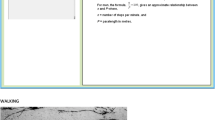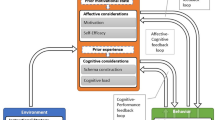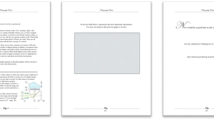Abstract
Differences were identified in students' performance of similar arithmetic tasks in two media: paper-and-pencil (P&P) and computer-assisted instruction (CAI). Performance of elementary school students on P&P was compared with their performance in CAI work in two widely used CAI systems-an Israeli and an American; in two types of practice-either mixed from a variety of types of exercises or of fixed-type exercises; with two types of task arrangement-either strictly or loosely hierarchical; and with two criteria-either level of performance as defined in the CAI curriculum or the percent of correct answers. Results show that for both CAI systems, for both criteria, for both types of task arrangement, and for either type of practice, the majority of students performed with P&P better than in their simultaneously current CAI work. However, there were students who achieved the opposite results for tasks arranged in loose hierarchy. These two contradictory trends are discussed and explained on the basis of prolonged observations of several students working with the two CAI systems involved.
Similar content being viewed by others
References
Bath, D. A. and Hughes, B. G. (1983). Computerized quizzes with instant grading and response analysis. Journal of Chemical Education, 60, 734.
Becker, H. J. (1987). Using computers for instruction. Byte, 12(2), 149–162.
Burns, P. K. and Bozeman, W.C. (1981). Computer-assisted instruction and mathematics achievement. Is there a relationship? Educational Technology, 21(10), 32–39.
Collins, M. A. J. (1984). Improving learning with computerized tests. The American Biology Teacher, 46, 188–191.
Eaves, R. C. and Smith, E. (1986). The effect of media and amount of microcomputer experience on examination scores. The Journal of Experimental Education, 55(1), 1986, 23–26.
Gagné, R. M. (1968). Learnng hierarchies. Educational Psychologist, 6(3), 1–9.
Gourgey, A. F. (1985). Coordination of instruction and reinforcement as enhancers of the effectiveness of computer-assisted instruction. Paper presented at the annual meeting of the American Educational Research Association, April, Chicago.
Guttman, L. A. (1944). A basis for scaling quantitative data. American Sociological Review, 9, 139–150.
Hartley, S. S. (1977). Meta-analysis of the effects of individually paced instruction in mathematics (Doctoral dissertation, University of Colorado), Dissertation Abstracts International, 38 (7A), 4003. (University Microfilms No. 77-29,926).
Hativa, N. (1986). Computer-based practice in artithmetic (TOAM): Dreams and realities-an ethnographic study. The Pinchas Sapir Center for Development, Tel Aviv University, Discussion paper No. 7–86.
Hativa, N. (1988). Differential effectiveness of computer-based drill and practice in arithmetic. American Educational Research Journal, in press.
Jacobs, R. L., Byrd, D. M. and High, W. R. (1985). Computerized Testing: The Hidden Figures test. Journal for Educational Computing Research, 1 (2), 173–177.
Katz, L. and Dalbey, J. T. (1981). Computer and manual administration of the Eysenck Personality Inventory. Journal of Clinical Psychology, 37 (3), 586–588.
Kolodny, N. H. and Bayly, R. (1983). Using the computer for pre-laboratory quizzes. Journal of Chemical Education, 60, 896–897.
Kulik, J. A., Kulik, C-L C. and Bangert-Drowns, R. L. (1985). Effectiveness of computer-based education in elementary schools. Computers in Human Behavior, 1(1), 59–74.
Lee, J. A., Moreno, K. E. and Sympson, J. B. (1986). The effects of mode of test administration on test performance. Educational and Psychological Measurement, 46(2), 467–474.
Okey, J. R. (1973). Developing and validating learning hierarchies. AVCR, 21(1), 87–108.
Osin, L. (1984). TOAM: C.A.I. on a National Scale. In Proceedings of the Fourth Jerusalem Conference on Information Technology. Jerusalem: IEEE Computer Society Press.
Osin, L. and Nesher, P. (1988). Comparison of student performance in artihmetic exercises: TOAM computer versus paper-and-pencil. The Center for Educational Technology, Report No. 15.
Niemiec, R. P. and Walberg, H. J. (1985). Computers and achievement in the elementary schools. Journal of Educational Computing Research, 1(4), 435–440.
Poulsen, G. and Macken, E. (1978). Evaluation studies of CCC elementary-school curriculums 1975–1977. Palo Alto, CA.: Computer Curriculum Corporation.
Ragosta, M., Holland, P. W. and Jamison, D. T. (1982). Computer-assisted instruction and compensatory education: the ETS/LAUSD study. N.J.: Educational Testing Service.
Resnick, L. B. and Wang, M. (1969). Approaches to the validation of learning hierarchies. Pittsburgh: University of Pittsburgh Learning Research and Development Center.
Wise, S. L., Boettcher, L. L., Harvey, A. L. and Plake, B. S. (1987). Computer-based testing versus paper-and-pencil testing: effects of computer anxiety and computer experience. Paper presented at the annual meeting of the American Educational Research Association, Washington, D.C.
Author information
Authors and Affiliations
Rights and permissions
About this article
Cite this article
Hativa, N. CAI versus paper and pencil-discrepancies in students' performance. Instr Sci 17, 77–96 (1988). https://doi.org/10.1007/BF00121235
Issue Date:
DOI: https://doi.org/10.1007/BF00121235




